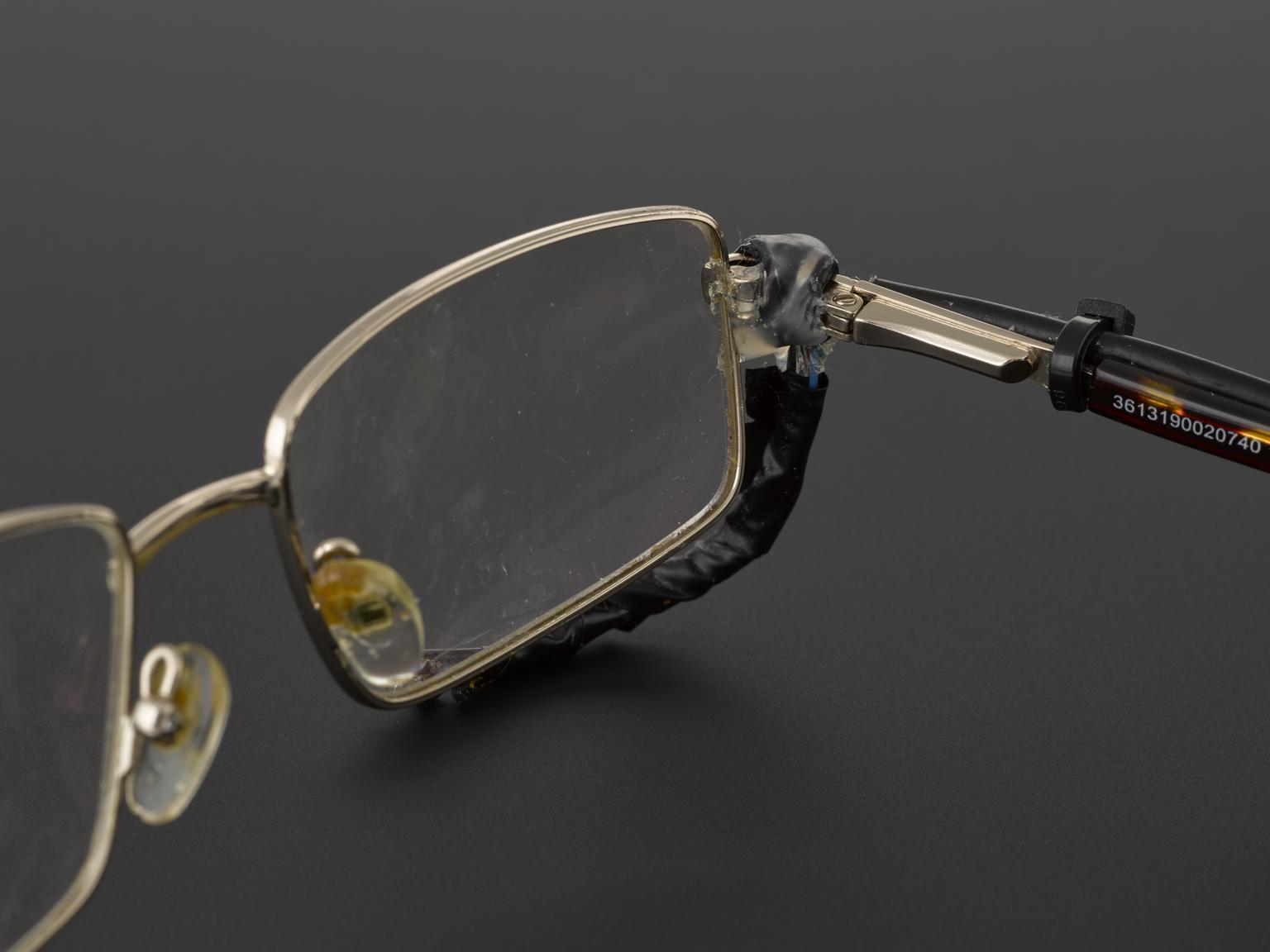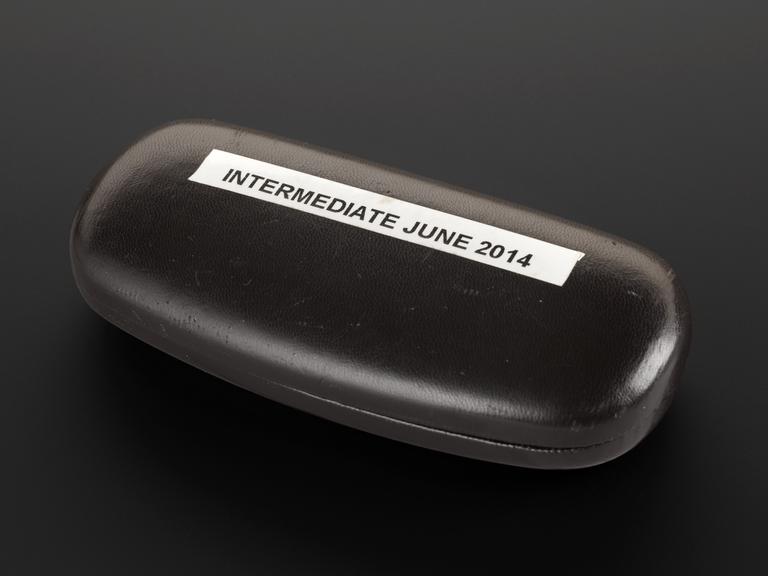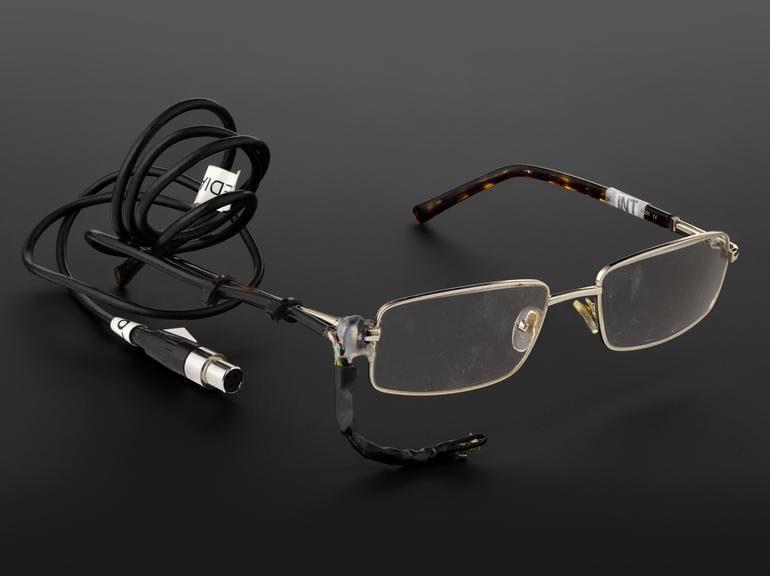
Eyeglasses with Sensor (test pair)
Custom-built communications system: Eyeglasses with tortoise-shell arms fitted with an infrared sensor wrapped in black tape, with long connector cable on its right side.
At first, Hawking controlled his voice software using a clicker. When he could no longer move his fingers, he and his team developed a custom-built system controlled by twitching his cheek muscles. A sensor mounted on his spectacles picked up these tiny movements.
In his later years, Hawking’s cheek movements had slowed his speech to 1–2 words per minute, and he was experimenting with systems to read his brain activity.
- Materials:
- plastic (unidentified) , metal (unknown) and glass
- Object Number:
- 2021-561/20/1
- type:
- spectacles
















